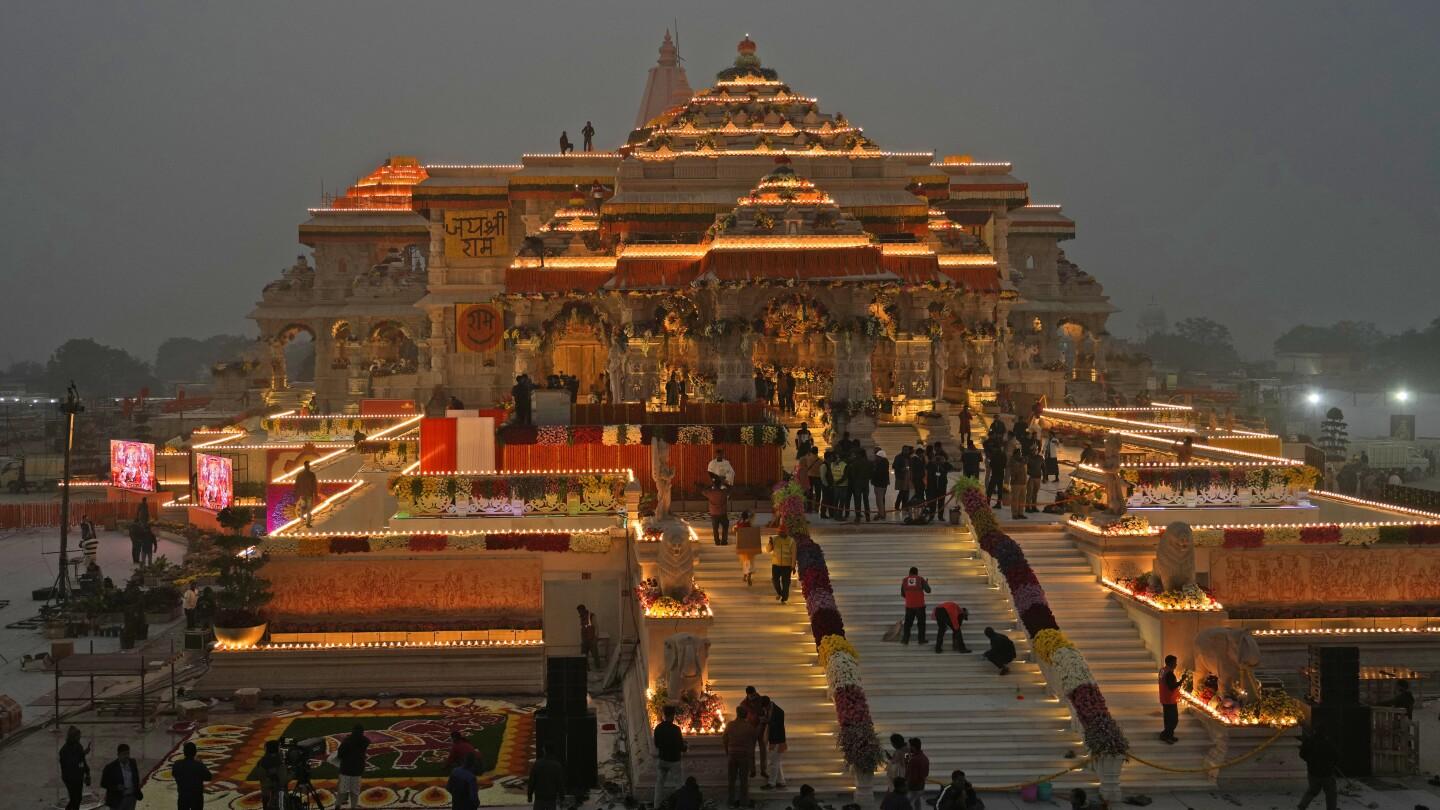While the city is timeless in its spiritual aura, planning your trip around the best time to visit Ayodhya ensures that you experience its temples, ghats, and festivals in the most comfortable and meaningful way. Ayodhya, the sacred city on the banks of the Sarayu River, is one of India’s most revered spiritual destinations. Known as the birthplace of Lord Rama and celebrated in the epic Ramayana, Ayodhya attracts millions of pilgrims and tourists every year.
🌄 Introduction to Ayodhya Tourism
Ayodhya is not just a city—it is a living embodiment of India’s spiritual heritage. From the grand Ram Janmabhoomi Temple to Hanuman Garhi, Kanak Bhawan, and the serene ghats of the Sarayu, Ayodhya offers a blend of devotion, history, and culture. The city’s charm changes with the seasons, and understanding the best time to visit Ayodhya helps travelers enjoy its beauty without discomfort.
🕉️ Why Timing Matters
Ayodhya experiences extreme summers, pleasant winters, and a vibrant monsoon season. Each season offers something unique, but the best time to visit Ayodhya depends on your purpose—whether it’s pilgrimage, sightseeing, or festival celebrations.
-
Comfortable Weather: Winters are ideal for exploring temples and ghats.
-
Festivals: Visiting during Diwali or Ram Navami offers a cultural extravaganza.
-
Spiritual Significance: Certain months align with important Hindu rituals and pilgrimages.
🌤️ Seasonal Breakdown: Best Time to Visit Ayodhya
1. Winter (October to March) – The Best Season
-
Temperature: 8°C to 25°C.
-
Highlights: Pleasant weather, ideal for sightseeing and temple visits.
-
Festivals: Diwali, Deepotsav, and Makar Sankranti.
Winter is widely considered the best time to visit Ayodhya. The cool climate makes it comfortable to explore Ram Janmabhoomi, Hanuman Garhi, and the Sarayu ghats. The city comes alive during Diwali, when thousands of lamps illuminate the ghats in the grand Deepotsav.
2. Summer (April to June) – For Devoted Pilgrims
-
Temperature: 28°C to 45°C.
-
Highlights: Ram Navami celebrations in April.
-
Challenges: Hot and dry weather, not ideal for casual tourists.
Summer is harsh in Ayodhya, but it coincides with Ram Navami, the birth anniversary of Lord Rama. Pilgrims from across India gather at Ram Janmabhoomi Temple, making it a spiritually rewarding time despite the heat.
3. Monsoon (July to September) – A Refreshing Experience
-
Temperature: 25°C to 35°C.
-
Highlights: Lush greenery, fewer crowds.
-
Challenges: Heavy rains may disrupt travel plans.
Monsoon brings a refreshing charm to Ayodhya. The ghats look beautiful with the flowing Sarayu, and the city’s gardens and temples are surrounded by greenery. While not the most popular season, it can be the best time to visit Ayodhya for those seeking peace and solitude.
🎉 Festivals and Events: Best Time to Visit Ayodhya Spiritually
Ayodhya’s festivals are deeply tied to its identity. Planning your trip around them ensures a memorable experience.
-
Diwali & Deepotsav (October/November): The entire city glows with millions of lamps, recreating the homecoming of Lord Rama.
-
Ram Navami (March/April): Celebrated with grandeur at Ram Janmabhoomi Temple.
-
Chhath Puja (October/November): Devotees worship the Sun God at Sarayu ghats.
-
Makar Sankranti (January): Pilgrims take holy dips in the Sarayu River.
For festival lovers, the best time to visit Ayodhya is during October to April.
🏛️ Tourist Attractions to Explore
When you plan your trip during the best time to visit Ayodhya, here are the must-see places:
-
Ram Janmabhoomi Temple: The spiritual heart of Ayodhya.
-
Hanuman Garhi: A fortress-like temple dedicated to Lord Hanuman.
-
Kanak Bhawan: Known for its golden idols of Lord Rama and Sita.
-
Dashrath Bhavan: Believed to be the residence of King Dashrath.
-
Ram Ki Paidi: Ghats along the Sarayu River, perfect for evening aarti.
-
Guptar Ghat: Associated with Lord Rama’s final departure.
-
Gulab Bari: A Mughal-era garden and mausoleum.
🍲 Cuisine in Ayodhya
Visiting Ayodhya is incomplete without tasting its local food.
-
Vegetarian Delicacies: Kachori, poori-sabzi, jalebi.
-
Temple Prasad: Laddoos and peda.
-
Street Food: Chaat and samosas near Hanuman Garhi.
The best time to visit Ayodhya also coincides with festivals, when special sweets and prasad are distributed.
🏙️ Modern Attractions
Ayodhya is evolving with modern infrastructure:
-
Maharishi Valmiki International Airport: Enhances connectivity.
-
Deepotsav Celebrations: Now an international attraction.
-
Museums and Cultural Centers: Showcasing Ramayana heritage.
🚂 Connectivity and Travel Tips
-
By Air: Ayodhya’s new international airport connects it to major cities.
-
By Rail: Ayodhya Junction links the city to Lucknow, Varanasi, and Delhi.
-
By Road: Highways connect Ayodhya to nearby towns.
Travel Tips:
-
Best time to visit: October to March.
-
Carry modest clothing for temple visits.
-
Book accommodations early during festivals.
-
Respect local traditions and rituals.
📈 Ayodhya Tourism and Economy
The best time to visit Ayodhya also aligns with peak tourism seasons, supporting local businesses, artisans, and hospitality industries. The Ram Mandir project has boosted global interest, making Ayodhya a centerpiece of India’s spiritual tourism.
🧭 Suggested Itineraries
-
Spiritual Circuit (3 Days): Ram Janmabhoomi → Hanuman Garhi → Kanak Bhawan → Dashrath Bhavan → Ram Ki Paidi.
-
Heritage Trail (2 Days): Nageshwarnath Temple → Gulab Bari → Guptar Ghat → Treta Ke Thakur.
-
Festival Experience (4 Days): Deepotsav celebrations → Sarayu Aarti → Sita Ki Rasoi → Local bazaars.
🌟 Conclusion
The best time to visit Ayodhya depends on your purpose. For comfortable sightseeing, October to March is ideal. For festival experiences, plan around Diwali or Ram Navami. For solitude and greenery, monsoon months offer peace. Regardless of when you visit, Ayodhya promises a journey into devotion, culture, and timeless heritage.
Ayodhya is not just a destination—it is an experience of faith and history that stays with you forever.



